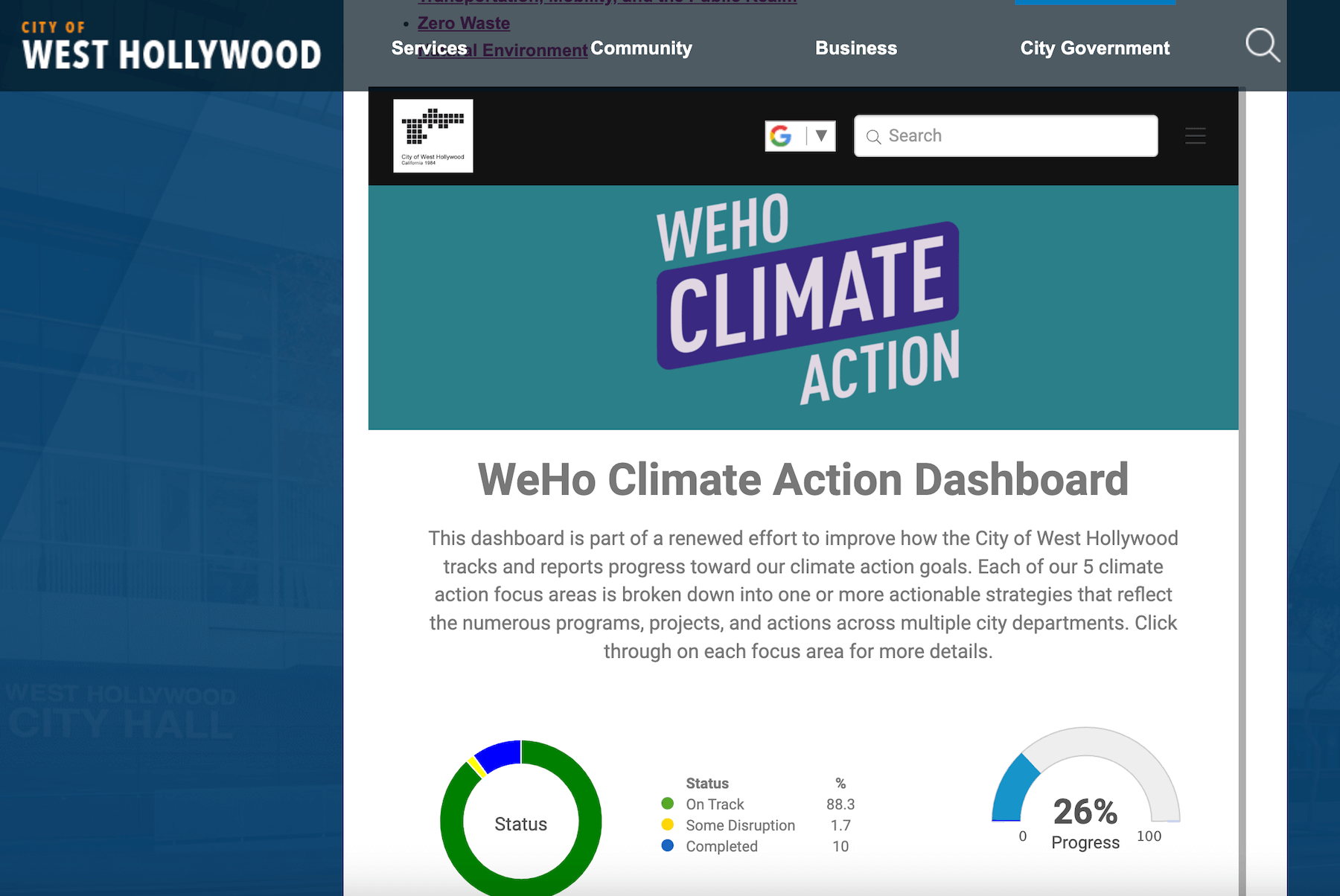
Contents
Budgeting is inherently part of the political process; it’s how we determine what values we will make real. – Mark Funkhouser
It’s often been said that a budget is a value statement about what is important to the organization. A budget should communicate an organization’s strategic priorities and forward-looking direction—however, for many local government organizations today, the message the budget sends is that keeping the status quo is the priority. This is, in large part, to do with the process used to create the budget.
Local government organizations have traditionally used an incremental, line-item budgeting approach. It is usually a backwards-looking process where the previous year’s budget provides the foundation for the next, with relatively small changes made at the margins.
In this post, we’re going to explore a more modern, and increasingly popular, budgeting process called priority based budgeting (also known as outcomes-based budgeting). Priority based budgeting (PBB) reorganizes budgets by focusing on service areas and outcomes rather than individual line items and expenditure categories. We’ll explore more about what this approach looks like, as well as the advantages and disadvantages of priority-based budgeting for local governments.
The Traditional Local Government Budgeting Approach
To understand priority based budgeting (PBB), we first should differentiate it from the traditional budgeting approach—incremental, line-item budgeting.
Incremental budgeting is an approach to budgeting, developed and popularized through the turn of the 20th century, pinpointed between the 1920s and 1940s, as an anti-corruption measure for governments.
With line-item budgeting approaches, expenditures are categorized into specific line items, each representing a particular expense category or item. Budgets are typically prepared and approved based on line items, such as salaries, supplies, utilities, equipment, and so forth.
It’s important to note that PBB and incremental, line-item budgeting aren’t entirely at odds with each other. A PBB approach can essentially be used as an added layer on a line item budget to help connect the dots between line items, strategic priorities, and outcomes.
However, one of the major drawbacks with a purely line-item budget is that it is often paired with an incremental budgeting philosophy, where each line item is allocated a predetermined amount of funding—with set incremental adjustments to the allocated funding given each year. In addition, cuts and increases to a department’s budget tend to be applied in a blanket way across all programs without much clarity into the relative impact of each program.
Appeals and Drawbacks of Traditional Budgeting
The simplicity and control of the traditional budgeting process is part of what makes it so attractive to budget administrators and other local government leaders. It provides a clear framework for controlling expenditures. It is predictable, and it is easily repeatable.
However, the same things that we might view as benefits are also the drawbacks of a traditional budgeting approach; local government simply is not an environment where expenses remain static. Today’s community needs are increasingly complex and change rapidly. Getting stuck in our ways risks devaluing (or over-valuing) certain projects and not being able to adapt quickly to new challenges.
Fundamentally, traditional budgeting lacks flexibility. When funds are allocated based on predetermined categories and incremental increases and cuts are applied in broad strokes, you end up with a budget process that cannot easily accommodate changing priorities or emerging needs.
But those aren’t the only issues…
Ironically, while line-item budgeting was developed as an anti-corruption measure, we now face an issue of limited accountability.
Since line-item budgets focus primarily on inputs (i.e., the expenditures), they are not usually good at demonstrating the relationship between spending and program outcomes.
Siloed decision-making can also be reinforced by line-item budgeting; it can be easy for funds to simply be allocated to specific programs or departments without considering overlapping action items or things already being delivered by other areas. This lack of internal visibility reduces accountability (and transparency), and contributes to inefficiency.
Let’s now take a closer look at priority based budgeting.
Five Advantages of Priority Based Budgeting
According to “Anatomy of Priority-driven Budget Process”, published by the ICMA and written collaboratively with Chris Fabian of Resource X, Shayne Kavanaugh of GFOA, and Jon Johnson with the Center for Priority Based Budgeting, priority based budgeting is guided by several key characteristics:
- Priority based budgeting prioritizes programs and services over departments, enabling a focused allocation of resources based on relative importance.
- Priority based budgeting emphasizes efficient resource utilization by directing funding towards higher-value services while scaling back or eliminating lower-value ones during periods of revenue decline.
- Priority based budgeting challenges historical spending patterns by encouraging innovative discussions around service delivery.
- Priority based budgeting operates within the constraints of available revenue, ensuring fiscal responsibility and sustainability.
This budgeting approach also emphasizes understanding the true costs associated with providing services to promote informed decision-making.
As Chris Fabian, CEO and Co-founder of ResourceX (now part of Tyler Technologies) told us:
“The challenge is that most organizations have new programs and services they wish to launch, in order to create a brighter future for their communities, but they perceive that they don’t have the people or the money to launch these new services.
At the same time, for many, the cost of providing current services continues to increase, putting additional strain on the resources available to achieve the results that matter most to their citizens.
With priority based budgeting, organizations discover solutions to optimize their current resources, and explore opportunities to attain new resources in order to successfully launch new programs and bolster the highest priority programs required to create the best future they can.”
If we break this down further, we can identify five primary advantages of adopting a priority based budgeting approach.
1. Greater Organizational Focus
Because priority based budgeting tends to be based on tangible impacts and outcomes rather than input, this approach makes it easier to align budget decisions with actual community priorities. By focusing on results and the effectiveness of service delivery, PBB can help to foster a culture of accountability and continuous improvement.
2. Improved Agility and Resilience
What does agility mean in the context of local government?
Simply put, it means an ability to pivot, learn from data, and stay outcomes-focused. Priority based budgeting utilizes program data to align resources with the community’s major priorities– an approach that fosters adaptability and responsiveness by ingraining regular assessments of a community’s needs. Communities are continually evolving. This means, priorities are continually evolving as well.
Take climate change. As more residents become vulnerable to the effects of a warming planet, increasing numbers of local governments have identified climate action as a priority. But understanding what makes for effective climate mitigation and adaptation techniques is an emerging and rapidly evolving area, and implementation requires agility from cities. Climate resilience and adaptation means not only preparing for climate change, but also avoiding further damage to the environment, and being able to respond effectively when disaster strikes. From expanding tree canopies, to transitioning away from fossil fuels, to creating sustainable development, these all require funding that may not have ever been in a budget before, and need a highly agile approach to budget allocation ongoing.
Here, on West Hollywood’s Envisio-powered public dashboard, you can see an example of how a climate adaptation plan has been given priority as an area worthy of funding. Their plan is holistic, ranging from development measures, water conservation efforts, to changing the way the municipal buildings function. It even tackles ways to incentivize public sector employees, thus approaching both the individual and systemic dimensions of climate change.
3. Encourages Program Data Gathering and Knowledge Sharing
Because PBB reorganizes budgeting by focusing on service areas and outcomes rather than individual line items and expenditure categories, it offers a comprehensive view of government activities and associated costs through a program lens.
This approach enhances organizational effectiveness by providing clear insights into the government’s actions and expenditure patterns. With a holistic understanding of how public funds are allocated, budgeting teams can readily identify inefficiencies and underutilized resources, and reallocate those funds to areas where they will have the most impact.
By using programs to contextualize budgetary items, finance teams, government officials, and residents can communicate more effectively and ensure that resources are aligned with community priorities.
4. Outcomes-Driven Approaches Build Transparency (and Trust)
Priority based budgeting is an outcomes-focused budgeting approach, which has promise for being a practical method for building trust with communities. PBB requires a level of program transparency with regards to outcomes and data in order for it to work, and this transparency helps bolster trust. PBB initiatives are typically coupled with a focus on community feedback and engagement, which also helps to build trust.
Focusing on impact over inputs, and continuous improvement in local government decision-making and service delivery, are important pieces in trust-building.
5. Results-Oriented Strategic Planning
Because priority based budgeting shines a light on resource allocation based on the relative impact of different programs and initiatives, strategic planning efforts end up being guided by a thorough analysis of the potential outcomes and benefits of various projects.
By defining desired outcomes through PBB, and then aligning those outcomes to a strategic plan to drive action and measure progress, strategic plans become results-oriented, aligned with real community needs, and lead to impactful and positive change.
This is the kind of work that makes successful implementation of strategic actions so much more likely.
“Strategic initiatives are projects at their core, and just like capital projects, their implementation efforts need to be funded,” says Dr. David Mitchell, an associate professor at the University of Central Florida. “Tools like priority based budgeting can help ensure that the implementation of priority projects such as strategic initiatives receive dedicated funding–which is the top predictor of implementation success.”
By prioritizing investments in areas that have the greatest potential for positive impact, local governments can maximize the effectiveness of their strategic plans and deliver meaningful results for their communities.
Disadvantages of Priority Based Budgeting
As with any significant process changes, many of the downsides of priority based budgeting have to do with navigating internal cultural shifts. Implementing PBB requires the introduction of a culture of performance management and data-informed decision-making, a readiness to embrace change, and a collaborative approach across departments to avoid feelings of conflict. Budget reallocation, of any magnitude, has high potential to cause a sense of competition and unfairness.
Here are some trouble spots to consider when switching to a PBB process:
- Subjectivity in Prioritization: The process of identifying and prioritizing initiatives or programs could, if not bolstered through the process of community engagement and/or robust data analysis, be subjective and influenced by the perspectives of the leaders involved. Subjectivity may lead to biases in resource allocation and potentially overlook critical needs or opportunities. The fix for this? Double down on smart data gathering.
- (Perceived) Complexity Among Employees: Priority based budgeting often involves comprehensive analysis and evaluation of numerous programs and services to determine their alignment with organizational priorities. This can be a complex process, but there are tools and resources out there to guide local governments through this process.
- Resistance to Change: Implementing priority based budgeting may face resistance from staff (and others) accustomed to traditional budgeting methods, particularly if it involves significant shifts in resource allocation or program funding.
- Risk of Overlooking Non-Prioritized Areas: While priority based budgeting focuses resources on high-priority initiatives, there is a risk of overlooking or underfunding programs or services that do not align directly with identified priorities but still contribute to overall organizational objectives or serve marginalized populations. That said, this is a matter of perspective and awareness; if anything, line-item budgeting has been the budgeting process with the least amount of flexibility for underfunded arenas. Priority based budgeting holds excellent potential for traditionally underfunded departments.
- Differential Impacts: Research from Dr. Mitchell indicates that PBB is most successful in more homogeneous, resource-rich settings where budgetary conflict is less prevalent. He also cautions, “PBB looks to be more impactful for marginal, discretionary functions without threatening core services.”
Addressing these drawbacks requires careful planning, community and employee engagement, and ongoing evaluation and refinement of the priority based budgeting approach to ensure it stays on track.
—
Priority based budgeting offers a strategic approach to resource allocation in public sector organizations. By prioritizing programs and services over departments, PBB enables a more precise, agile, and focused distribution of available resources according to relative importance—importance that can be determined in a number of ways. We really love the efficient promotion of resource utilization; directing funding towards higher-value programs, or reevaluating lower-value projects during times of financial uncertainty or strain.
This agility gives local governments a better handle on financial sustainability. It fosters a culture of data-informed decision making by understanding the true costs associated with each service provision. Already, we have seen exciting movement with priority based budgeting initiatives.
Get the Guide ↓
Want to learn more about making the change?
Our guide on Five Pillars for Aligning Budget with Strategy and Performance provides a framework for aligning a priority based budgeting process with your planning, performance, and reporting processes.







